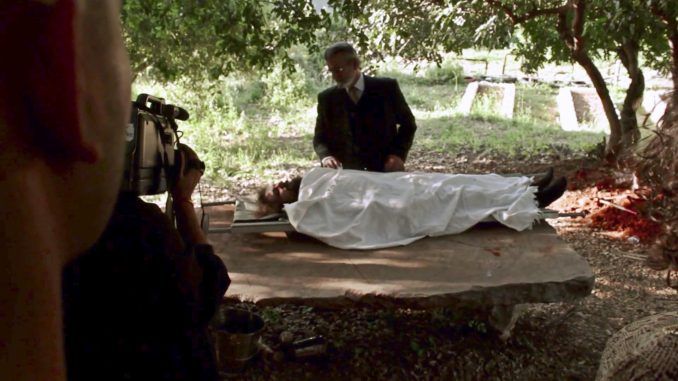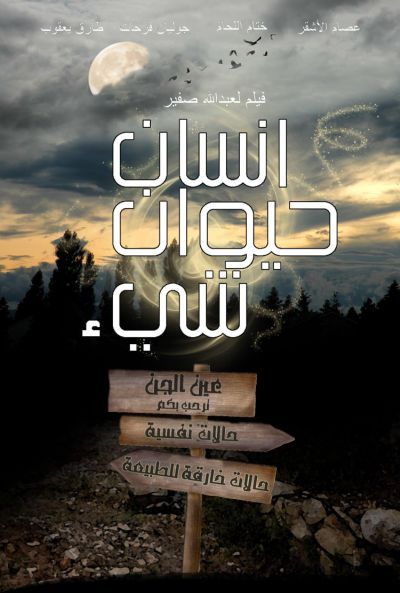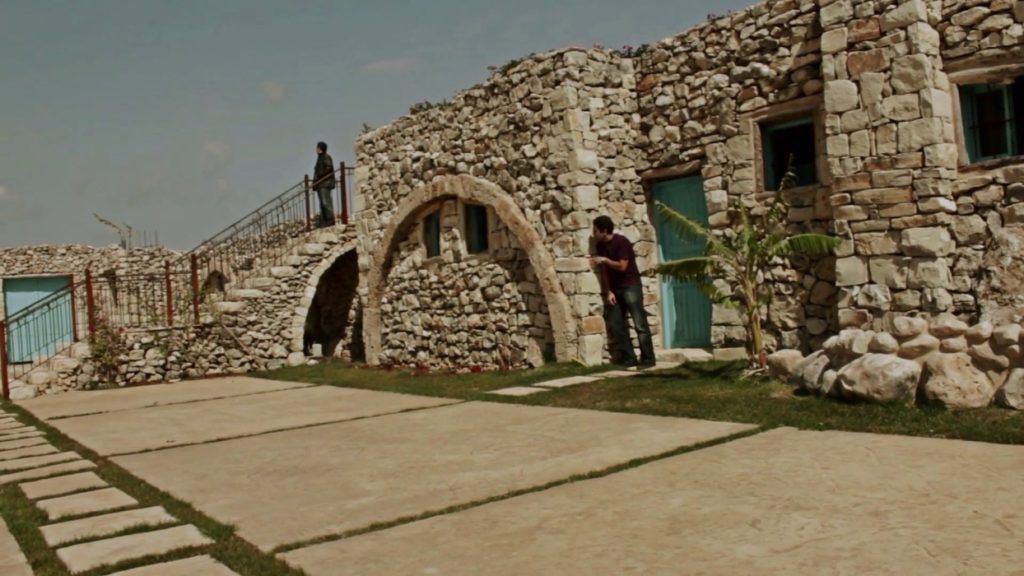
Rating: C+
Dir: Boudy Sfeir
Star: Tarek Yaacoub, Hadia Khoury, Nader Dernaika, Julian Farhat
To start with, I vanished down a rabbit-hole on the topic of whether the country this is from is “Lebanon” or “The Lebanon.” The Human League would lean towards the latter, having released a single by that title, which reached #11 on the British charts in May 1984. However, Googling indicates the currently preferred term drops the definite article, so I’ll go with that. I certainly don’t want to be guilty of unintentionally causing offense. When I cause offense, I want it to be 100% intentional, thank you very much.
Unsurprisingly, given its long ties to France (being a colony up until gaining independence in 1954), the history of cinema in Lebanon goes back well over a hundred years. The first movie theatre there was built by the Pathé brothers in 1909, and the first local movie, The Adventures of Elias Mabruk, came out in 1929. The sixties are regarded as the golden age, the country benefiting from an exodus of Egyptian talent, after the movie industry there was nationalized by General Nasser. Beirut around this time was nicknamed “the Paris of the Middle East”, but burgeoning political problems began to fester. While the capital had been a popular location for Western films, the makers of The Man with the Golden Gun opted not to shoot there due to the worsening situation.
 The first local horror film, based on what I’ve found, was 1966’s Mughamarat Filfila. This has been described as “A psychotronic blend of horror-fantasy, sex comedy, and chimpanzee movie”. The world – or, at least, Lebanon – was not apparently ready, the feature reportedly being banned before its release. Then, the Lebanese Civil War broke out in 1975, causing around 150,000 deaths over the next fifteen years. While films still were made, people were understandably more occupied with staying alive, and not even the sultry sounds of Phil Oakey could help. When peace broke out (more or less), horror appears almost absent. The only other Lebanese feature listed in the genre on the IMDb is What Is Buried Must Remain. Even Insan is listed as a “thriller,” which… Hmm, I can see, yet to me, there are more horror elements than thrills to be found here.
The first local horror film, based on what I’ve found, was 1966’s Mughamarat Filfila. This has been described as “A psychotronic blend of horror-fantasy, sex comedy, and chimpanzee movie”. The world – or, at least, Lebanon – was not apparently ready, the feature reportedly being banned before its release. Then, the Lebanese Civil War broke out in 1975, causing around 150,000 deaths over the next fifteen years. While films still were made, people were understandably more occupied with staying alive, and not even the sultry sounds of Phil Oakey could help. When peace broke out (more or less), horror appears almost absent. The only other Lebanese feature listed in the genre on the IMDb is What Is Buried Must Remain. Even Insan is listed as a “thriller,” which… Hmm, I can see, yet to me, there are more horror elements than thrills to be found here.
What’s especially interesting here, is that while this deals in the same kind of supernatural shenanigans as most of the horror films from the Middle East, e.g. the Sikkin franchise, it does so from a much more sceptical direction. Perhaps this reflects Lebanon’s more secular society, certainly compared to some other countries in the region? As part of his psychology course at Beirut Universiry, Nour (Farhat) is clearly a humanist, telling his class that fear of death is what led to the the appearance of religion. He gives the class a task. They’re to go to a Lebanese village, to investigate some reported paranormal events. Their mission is to “prove, using physical evidence, that they are nothing more than psychological cases.”
The three students are Ramzi (Yaacoub), Sam (Dernaika) and Sahar (Khoury), whose destination is Ain Al Jen. The first case involves a local psychic, Khalil, who can allegedly save the possessed and even raise the dead (top). The second is a mother who believes she is communicating with her supposedly dead son. The third is a pregnant woman being threatened by a demon trying to kill her foetus. Fourth and finally, an old-school haunted house, the source of music and other unexplained noises. Initially, I thought this was going to be an anthology, as they investigated each case in turn. However, they all end up interlocking to some degree, and by the end, it’s uncertain whether or not there is any genuinely supernatural component to them.
That, I suspect, is where the “thriller” label would come in. To be honest, it feels like a good way to describe this would be as a Lebanese remake of Scooby-Doo, albeit minus… um, Scooby-Doo. I think the similaerity hit me when one of our heroes is being menaced by a “demon”, only for it to be revealed as a guy in a mask. He would probably have got away with it, if it hadn’t been for those meddling kids. For it turns out a lot, although not necessarily all, of what is going on, is part of a scheme by some in the village to acquire power. The presence of our trio, and the subsequent arrival of a TV crew following their initial report, are not coincidental: “Is there anything faster and more dangerous than the media in this age?” muses Khalil.
 My initial grade for this was rather lower. Looking back on it though, I remember it somewhat more fondly than I did at the time, when it seemed mostly amateurish and wobbly. If not always successful, it is at least attempting to do something different with the “ghost-hunting expedition” subgenre, which usually ends up going the other way: doubting sceptics end up convinced of paranormal reality. The location is impressive too, offering some striking visuals (above) and a sense of genuine history. It was filmed in Amioun, which has been a human settlement since the Paleolithic period: you can’t buy that sense of age permeating every stone block.
My initial grade for this was rather lower. Looking back on it though, I remember it somewhat more fondly than I did at the time, when it seemed mostly amateurish and wobbly. If not always successful, it is at least attempting to do something different with the “ghost-hunting expedition” subgenre, which usually ends up going the other way: doubting sceptics end up convinced of paranormal reality. The location is impressive too, offering some striking visuals (above) and a sense of genuine history. It was filmed in Amioun, which has been a human settlement since the Paleolithic period: you can’t buy that sense of age permeating every stone block.
However, the story in general remains weak. I don’t know quite what the agenda of the antagonists was supposed to be. Why are they going to what is clearly, quite a considerable bit of trouble? But they also blatantly half-ass other aspects of their plan. The “haunted house,” for example, is debunked in about three minutes, because we put more effort into the Halloween decorations at Film Blitz Towers. The ending is disappointingly flat: while I appreciated its generally downbeat tone, it’s again reminiscent of Scooby-Doo, with a lengthy chunk of exposition. There’s room for improvement in Sfeir’s approach, which only occasionally gets more than moderate tension out of circumstances that feel like they should be borderline terrifying. Still, it’s a start.
This review is part of our October 2024 feature, 31 More Countries of Horror.
